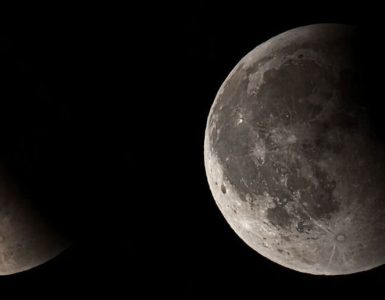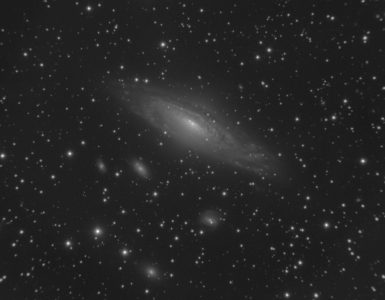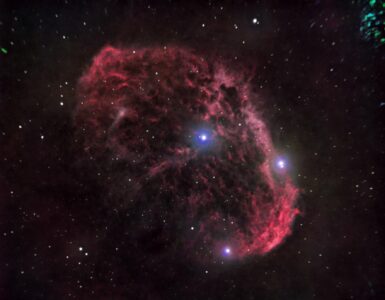 In the middle of July we took our first own astrophotographs in the observatory. Before that, we had received an introduction to the controls of the telescope. After taking several pictures of the sun we were already a bit more familiar with the School Lab.
In the middle of July we took our first own astrophotographs in the observatory. Before that, we had received an introduction to the controls of the telescope. After taking several pictures of the sun we were already a bit more familiar with the School Lab.
On July 16, we met at the observatory in the afternoon to set up everything in the light, since we had no experience at night. With the help of STScI club member Peter Stinner we assembled and mounted the necessary parts to connect the cameras to the telescope. We also familiarized ourselves with the recording and tracking programs. When it was finally dark, we aligned the telescope. Then we mounted the previously prepared parts to the telescope. To take the photos, we installed a Canon EOS camera modified for astronomy on one of the three Celestron C11 telescopes in the school lab. To track the telescope accurately, we mounted a Zwo ASI CCD camera on the corresponding tracking telescope. After a rough focusing on a star, we could start. Our target was the Dumbbell Nebula. The Dumbbell Nebula is a deep sky object in the constellation of Vulpecula. The nebula was formed by the death of a star, which threw off its gas shell and became a white dwarf. The gas nebula is made luminous by the central star. Nevertheless, the nebula’s brightness is so low that it cannot be seen with the naked eye. To be able to take a photo, one has to increase the exposure time to capture more light. After some trial and error, we found a good setting. With a single exposure time of three minutes, we made a series of photos over a total exposure time of one hour. In the meantime, we warmed up in the observatory and watched the work on the large telescope. After one hour the pictures were ready. In the morning around 2 o’clock we took pictures of Jupiter and Saturn with another CCD camera. After cleaning up, we went to sleep in one of the dormitories of the observatory.
The next morning we cleaned up the rest and looked at the results for the first time. We were amazed at how good the images were even before post-processing. However, one could clearly see that it was a full moon night and that our focus was not quite perfect. Nevertheless, we were more than satisfied with our first astrophotos. Some time later we stacked the images of the nebula with the program “Deep Sky Stacker” and those of the planets with the program “Autostakkert!”. We also post-processed the image of the nebula under Windows with “AstroArt” to achieve a higher contrast image.
Image and text: Lucia Gröger and Sophia Wick, class 12 of the Aggertal-Gymnasium Engelskirchen






Add comment